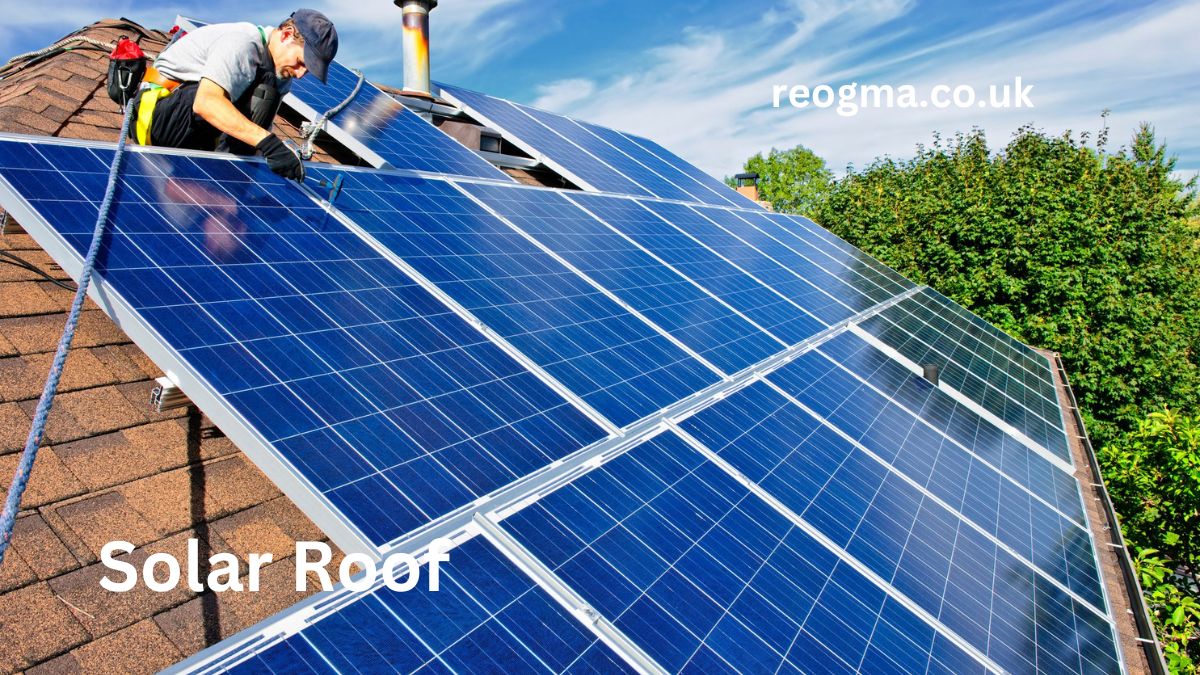Renewable energy technology have advanced significantly in recent years, changing our perspective on power generation. The solar roof is one of these inventions that combines sustainability and usefulness in a way that is truly innovative. In addition to providing a substitute for conventional power sources, a solar roof integrates smoothly into a building’s architecture and is a crucial component of its infrastructure. Solar roofs are becoming a more alluring choice for businesses and families looking to lower their carbon footprint while saving money over the long run as worries about climate change increase.
What Is a Solar Roof?
A roof made of photovoltaic (PV) panels or tiles—which can capture sunlight and turn it into electricity—is referred to as a solar roof. Solar roofs incorporate the technology directly into the roof’s structure, in contrast to conventional rooftop solar panel systems, which place panels on top of an existing roof. This indicates that the roofing material itself enhances both functionality and appearance by acting as a solar energy collector.
In order to mimic more conventional roofing materials like slate or asphalt shingles, solar roof tiles are frequently composed of materials like tempered glass. The fundamental benefit is that, in contrast to traditional solar panel systems, they are less intrusive because they provide electricity while preserving the building’s architectural integrity.
How Does a Solar Roof Work?
Like all solar energy systems, a solar roof works on the same basic principle: photovoltaic cells placed in the roof tiles absorb sunlight. The direct current (DC) electricity produced by these cells is subsequently converted into alternating current (AC) that may be used in homes or businesses by passing it via an inverter. Depending on local laws and infrastructure, any extra electricity can either be delivered back to the grid or stored in a battery system (like Tesla’s Powerwall).
Benefits of Installing a Solar Roof
Environmental Impact: By utilizing a clean and sustainable energy source, solar roofs considerably lower carbon emissions. By lowering the demand for electricity from fossil fuel power plants, each kWh of solar energy produced helps to slow down global warming.
Aesthetic Appeal: Solar roof tiles are streamlined and complement the architecture of a house or structure, in contrast to large solar panels. For homeowners that wish to enjoy the advantages of solar energy without sacrificing exterior appeal, they are a workable option.
Long-Term Financial Savings: There are significant financial advantages associated with solar roofing. Solar roofs can significantly reduce electricity costs after the initial expenditure, which is frequently greater than that of conventional roofing materials. Homeowners may potentially be eligible for solar energy credits, tax breaks, or rebates, depending on their location. Through energy savings, solar roofs frequently pay for themselves over time.
Durability and Lifespan: A lot of solar roof products are made to last a long time, often outlasting conventional roofing materials. For instance, tempered glass, which is harder and more resilient to damage than conventional asphalt shingles, is used to make Tesla’s Solar Roof tiles.
Enhanced Property Value: In general, homes with solar energy systems have higher property values. Solar roofs are a powerful selling point since potential customers are drawn to the idea of lower energy costs and energy independence.
Challenges and Considerations
Solar roofs have many benefits, but there are drawbacks as well. One of the biggest obstacles is the initial expense, since installing solar roofs can be more costly than installing regular roofs or conventional solar panel systems. Furthermore, solar roofs work best in areas with lots of sunlight; they might not produce as much energy in places with a lot of clouds or seasonal variations.
The appropriateness of the roof is another factor to take into account. Not all roofs are made to support solar tiles, particularly older homes that may need structural modifications. Additionally, research into the long-term efficiency of solar roof technology in comparison to conventional solar panels is currently ongoing.
Conclusion
The solar roof, which combines energy efficiency with contemporary aesthetics, is a major step toward a sustainable future. For individuals who are dedicated to lowering their carbon footprint, the long-term financial and environmental advantages outweigh the rather high initial cost. Solar roofs will probably be crucial to the global transition to sustainable energy as adoption rates rise and technology advances.
FAQ’s
1. What is a solar roof?
A roofing solution that incorporates photovoltaic (PV) technology straight into the roof structure is known as a solar roof. The roof tiles themselves absorb sunlight and transform it into power, eliminating the need for conventional solar panels to be installed on top of the roof.
2. How does a solar roof differ from traditional solar panels?
Solar roofs integrate solar cells directly into the roof tiles or shingles, as opposed to conventional solar panels, which are placed on top of an existing roof. This results in a more visually appealing design and can completely eliminate the requirement for traditional roofing materials.
3. How does a solar roof generate electricity?
Photovoltaic cells placed in the roof tiles are how solar roofs operate. Sunlight is captured by these cells and transformed into direct current (DC) electricity. The DC electricity is subsequently converted by an inverter into alternating current (AC), which can be used to power residences and commercial buildings.










